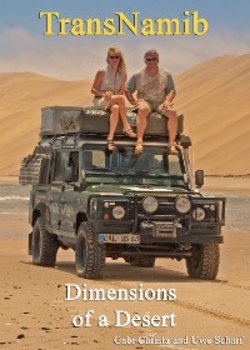Читать книгу TransNamib: Dimensions of a Desert - Gabi Christa - Страница 16
ОглавлениеThe declaration of the Sperrgebiet Diamond Areas in the Namib Desert
At Grasplatz the sand is blown about, no trees, no shrubs, not to speak of grass, grow at this spot in the middle of the desert. Whence the name? No more than a peeling signboard and a ruin mark the place where August Stauch’s story began. At a time when, between Aus and Lüderitz, goods were transported by ox wagons, fodder for the oxen – grass - was kept here, hence the name.
Grasplatz, the Starting Point of the Diamond Story
Stauch was an athletic, handsome, modest and able man, and a caring father. On 15 April 1904 he married Ida Schwerin. Two kids were born, Hans and Marianne, followed by Helmuth and Käthe. It wasn’t an easy decision for the father of the family to go to Deutsch-Südwest. Financial troubles, however, forced him to do so. In May 1907, Stauch disembarked in the inhospitable harbour of Lüderitz bay. The site of his mission was located 24 kilometres outside of Lüderitz, along the 104-kilometre railway line between Lüderitz and Aus. Construction had started in 1905 and had been accomplished seven months later, the material for it having been shipped from Germany. Together with support staff, Stauch was in charge of keeping a certain section of the railway line free from sand. The necessity for this is obvious. Persistent strong winds make a dune of one metre in height wander by about 12 metres a day. Stauch took to studying both the starry sky as well as the desert. He was looking for a way to stop the wandering dunes which are in constant motion. Before, they invaded the railway tracks, now it is the tarred road to Lüderitz which they encroach upon, constantly, albeit nearly invisibly. Stauch found social comfort in Lüderitz. At that time, there was still some hustle and bustle, which was, however, already declining. The depression, like a leaden blanket, descended steadily upon the settlement. Bankruptcy closed down shops, unemployment and construction sites were abandoned unfinished and forced people to wonder about the future.
In 1908, in a kind of coincidence, Zacharias Lewala, one of Stauch’s staff, found the first diamond. Together with Kreplin and Weidmann, Stauch went to work with the utmost discretion. But after the men had become owners of the mining rights around Kolmanskop, the key word diamond could no longer be kept secret. The diamond fever spread like an epidemic. Stauch was part of the diamond rush from the beginning and, for a certain period of time, acquired legendary riches, but unfortunately died a poor man on 6 May 1947 in Eisenach.
The news promising wealth fanned out in the town with the speed of the wind. The good news from the desert even reached Berlin, which, at short notice, produced harsh consequences for the young entrepreneurs in diamond mining. After an assessment on site by the secretary of state of the Reich colonial department, Bernhard Dernburg, within a week the area had been declared Sperrgebiet prohibited area. The almighty in Berlin were afraid that the ordinary Joes might cash in on all the diamond riches themselves. Thus, the diamond diggers in the desert were struck dumb by the awful news. Henceforth nobody was allowed to enter, without permission, this strip of desert, 137 km long, parallel to the coast, stretching from the 26th latitude to the border of South Africa. The German Diamond Corporation (DDG) was founded and, immediately, everything had to be done according to strict rules. You couldn’t buy any more mining rights; instead, there arose quarrels about how to deal with the existing claims. Diamonds could no longer be exported overland and commerce became monopolised in order to ensure the profits for the German Reich. Success ensured that DDG became a significant rival to the powerful South African trust De Beers. The machines which were put to work In South-West were more up-to-date than those in Kimberley and so, between 1908 and 1914, more than 5 million carats of diamonds were mined.
